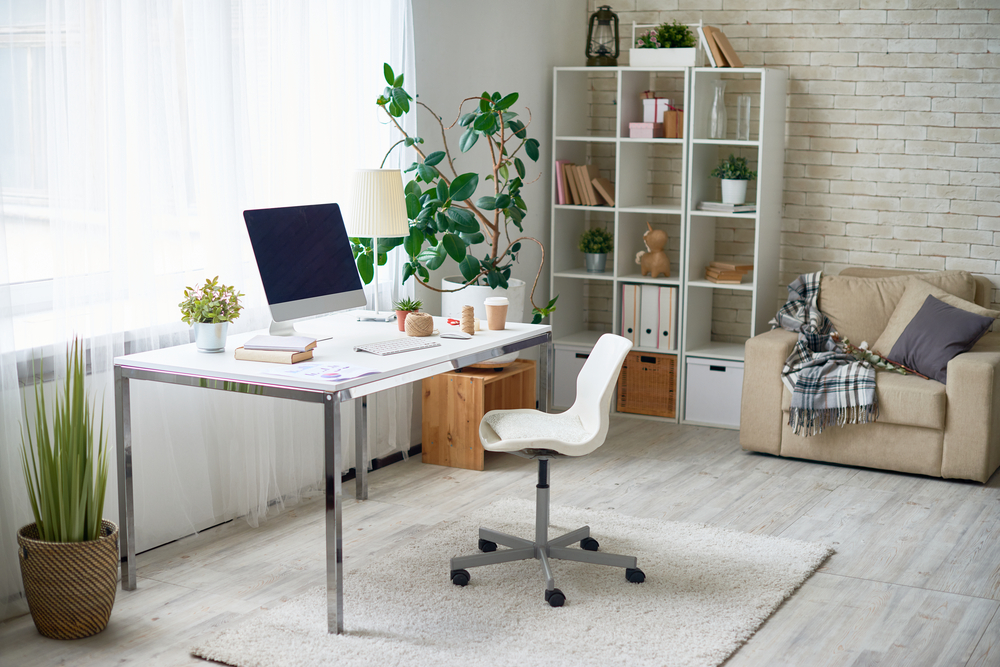
People have been working from home for a while now. With businesses offering a greater level of autonomy and flexibility to their workers for the long run, many of us will have created office spaces in our homes. These spaces are vital to our productivity, and we have therefore put some of our favourite design ideas together in order to make your home office a hotbed of efficiency.
Nail the basics
When designing a home office, it can be easy to get caught up in the design aesthetic first and foremost, but the basics of a suitable desk and comfortable chair are not to be overlooked. These two pieces of equipment could make your working-from-home bleak or blissful, so take the time to choose wisely. When choosing your seat, ensure that the height and lumbar can be fully adjusted; your thighs should be at a right angle to the floor and your feet totally flat to provide the most ergonomic seating position.
Don’t neglect storage
The old adage of ‘tidy space, tidy mind’ is prevalent for a reason – we tend to work best when we’re in comfortable, organised spaces. It’s easy to forget that a home office will need to have masses of storage in order to store your working documents, as well as any accoutrements you need on a day-to-day basis. When planning your home office, incorporate space for storage which includes shelving, cupboards and filing cabinets.
Create an oasis
Your home office should be a space that you want to visit; therefore, creating a pleasant and attractive room should be high on your priorities to encourage you to use it. Studies have suggested that using greenery in our work spaces can make us happier and improve cognitive functions, so adding plants or herbs in your office space are an easy method to incorporate some natural elements. In line with the greenery, keep the general feel of your home office light and airy by keeping walls and décor neutral, perhaps with one simple accent wall in a colour such as navy blue, which is supposed to help with concentration.
Creating space
Not everybody will have an extra room to dedicate to a home office, but don’t let that stop you. If you have an alcove in any rooms in your house, you can turn it into a mini home office simply with a fold down desk. You could also double up the use of your dressing table or kitchen table. One of the benefits of not having a dedicated fixed office space is that you can move your home office around if you feel like you need a motivation refresh.